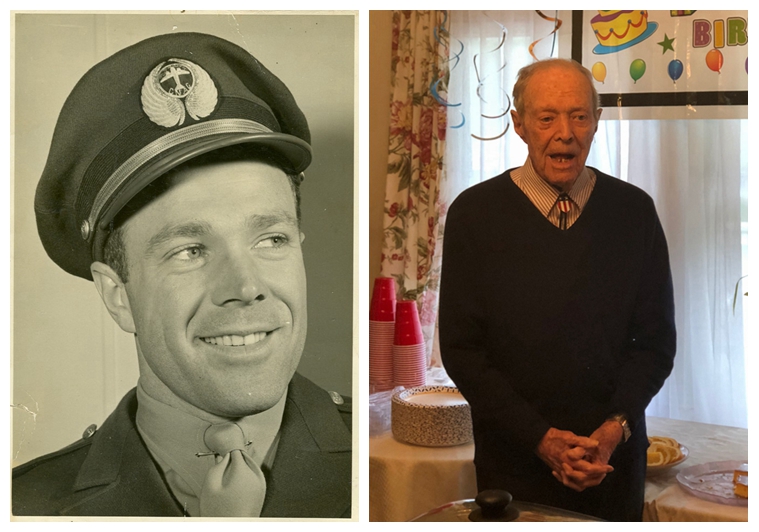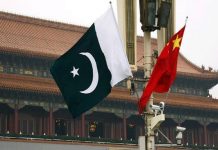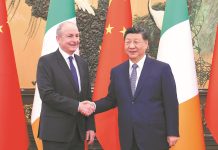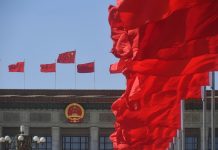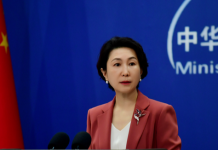BEIJING: Robert L Moore, a 98-year-old Hump pilot, was welcomed as a “super idol” when he arrived at Tampa International Airport in Florida for a trip to Washington, D.C. on April 8. He was escorted airside by the airport’s Police Chief Charlie Vazquez. Passengers and airport employees stopped to thank Moore for his service in World War II (WWII), with many even asking to take a picture with him.
“I didn’st expect any of this,” Moore said about all the attention. On that day, he was heading for the opening ceremony of “Remembering Heroes—80th Anniversary of the Flying Tigers and America’s Second World War Air Defense of China Photo Expo”, which was to be held in the National Air and Space Museum on April 9.
During WWII, American and Chinese pilots teamed up to fly the Hump, a trans-Himalayan air route opened up in 1942, to deliver supplies from Assam in India to Yunnan and Sichuan provinces in southwest China for fighting against the Japanese invasion. It was one of the world’s most dangerous air routes. The mission was carried out by the India-China Division of the Air Transport Command (ATC) of the U.S. Army and the China National Aviation Corporation (CNAC). Moore, who flew more than 70 Hump trips, was an airman of the India-China Division.
Besides Moore, CNAC’s Peter J. Goutiere, who celebrated his 108th birthday on September 28, is among the few surviving Hump pilots in the U.S.
This year marks the 80th anniversary of the Hump Mission. “It’s great to be part of the group that flew over the Hump during WWII and to still be around for the anniversary,” Goutiere, who flew 680 Hump trips, told Beijing Review. In the early 1940s, Goutiere and Moore successively came to help China fight against the Japanese invasion in the main Eastern theater of WWII, also known as the World Anti-Fascist War. Japanese troops began to invade the northeastern region of China on September 18, 1931, and launched a full-scale invasion of China in July 1937. Soon, they had taken control of almost all harbors along China’s coastline, leaving the Burma Road, which linked the Yunnan Provincial capital, Kunming, with Lashio in neighboring Burma (now Myanmar), as the only practical route for international supplies into China. The road was open in August 1938.
Military and other supplies were first transported to India and then delivered to China via the Burma Road.
On December 7, 1941, Japan attacked Pearl Harbor, triggering the outbreak of the Pacific War. China entered the Anti-Fascist Alliance on January 1, 1942, teaming up with the U.S. and the UK to fight against their common enemies in the China-Burma-India Theater. At that time, Burma was a British colony.
However, after Burma’s submission to the Japanese in May 1942, the road was closed, leaving China’s war of resistance entirely cut off from international supplies. It was for this reason that the Hump was opened up. When the pilots crossed the southern section of the Himalayas, the Gaoligong Mountains and the Hengduan Mountains, the towering peaks looked to them like the humps of camels. It is from this resemblance that the air route came to be known as the Hump. It was the military supply lifeline for China from 1942 to 1945. High altitude, perilous weather and Japanese fighter planes were among the major dangers faced by the pilots on every supply mission. Therefore, the route was dubbed the “Skyway to Hell.”
The Hump was not a single route but a collection of routes. Of the two main east-west routes, the northern route was longer and higher, and the high-altitude crossing meant pilots and crew faced frequent extreme weather events. The southern route was shorter and the mountains were lower, but often no less perilous. Its position close to Japanese-controlled Burma put it within striking distance of Japanese fighter planes and the supply missions were often attacked.
After May 1942, Japanese fighter planes often flew south to north to intercept the cargo planes that flew west to east to carry supplies to China. When defenseless cargo planes met enemy fighter planes, there was little chance to escape. On October 13, 1943, the CNAC’s No.72 cargo plane was shot down by three Japanese fighter planes. All three crew members were killed. From then on, the CNAC decided to either exclusively fly the northern route or fly at night.
Adding to the risk, there was no weather station along the Hump. The best source of weather information came from the pilots who had just flown through each area. However, “the weather on the Hump changed from minute to minute, mile to mile,” wrote William Henry Tunner, commander of the India-China Division, in his 1964 memoir Over the Hump.
–The Daily Mail-Beijing Review news exchange item

